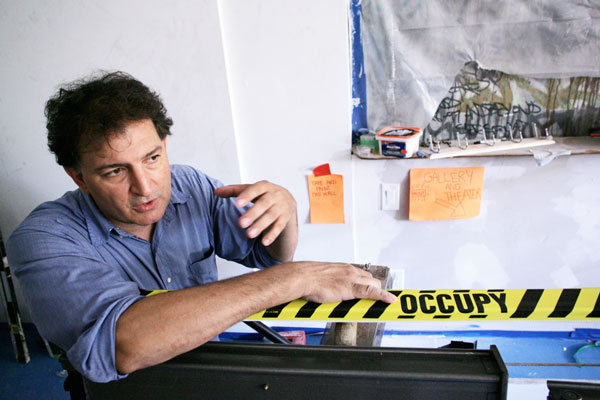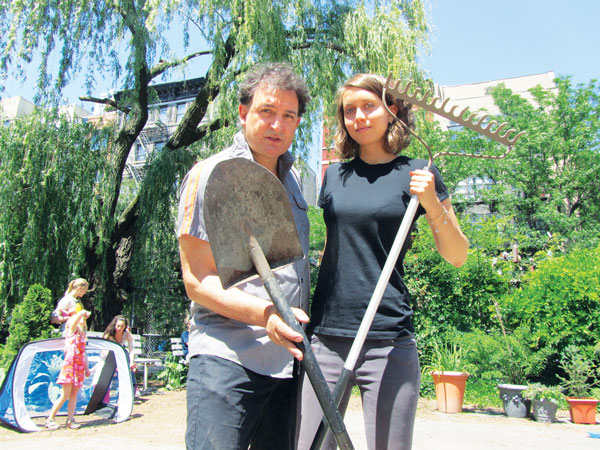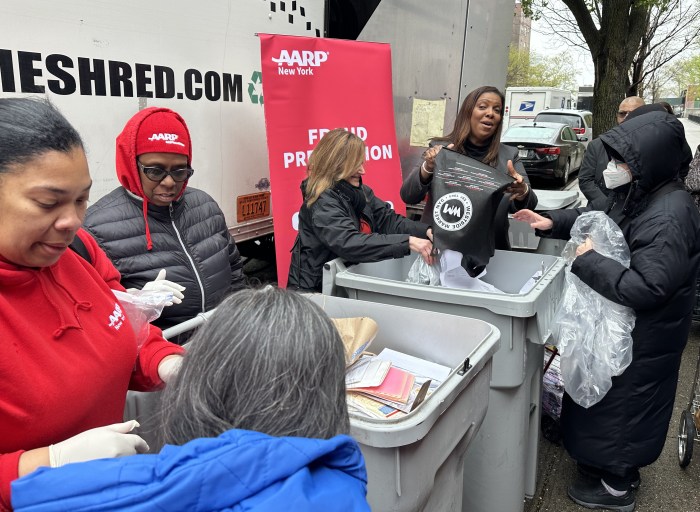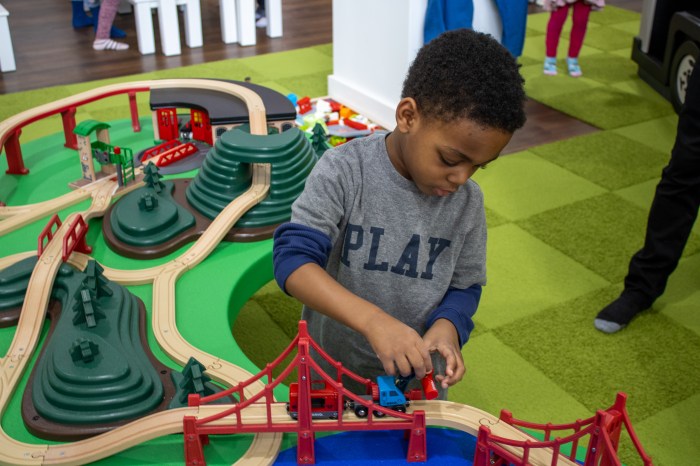
BY SAM SPOKONY | What gives Bill Di Paola the right to think his museum is more “real” than anyone else’s, anyway?
“It’s real because I’ve got a shovel in my hand!” he said, laughing, as he heaved a load of sand into a pit at La Plaza Cultural, one of the East Village’s most historic community gardens.
To his right, Laurie Mittelmann followed with her own shovelful. The two of them had walked down the block to the garden after cleaning floors all morning at their new Museum of Reclaimed Urban Space (MoRUS), which is getting ready to open soon.
“It’s real because we’re doing the work ourselves,” said Di Paola, “and we’re going to show the stories of the everyday people of this community who did it themselves.”
Those stories — of East Village activists, squatters, environmentalists and other leaders of all stripes — will soon be told at MoRUS, of which Di Paola and Mittelmann are co-founders. And while the neighborhood certainly has changed in recent decades, the spirit that went into shaping it seems to remain alive and well.
MoRUS is located in the storefront of the legendary C-Squat building at 155 Avenue C. The museum seeks to present the history of various community struggles — first, to revitalize the East Village and Lower East Side, after many buildings and lots were neglected to the point of arson and collapse in the 1970s, and then to maintain what had been saved, when city officials tried to evict squatters and demolish gardens in the ’80s.
Roughly a dozen squats, including C-Squat, have lived to tell the tale, after the city relented about a decade ago, in a deal allowing those occupying the salvaged tenements to become legal owners. La Plaza Cultural survived in a similar way, after court battles between activists and building developers culminated in a 2002 legal settlement that saved scores of other community gardens.
It’s the work that went into these and other successes, the museum’s founders said, that needs to be remembered.
“We want to educate people who aren’t familiar with this, and might not have thought this kind of change could be possible,” said Mittelmann. “But we’re also trying to teach the people who live in the community, who might not know their own history.”
The museum will also document battles that were lost, or are still ongoing, such as the effort to reclaim the old P.S. 64 — the former CHARAS/El Bohio Cultural and Community Center — on E. Ninth St. at Avenue B as a community space.
The museum’s indoor space is being outfitted to display a wide range of archival images and videos, documenting the role East Village and Lower East Side activists have played in preserving what stands today. Those diverse dynamics will blend iconic work — from the likes of photographers Harvey Wang, Marlis Momber and Maggie Wrigley — alongside lesser-known ’80s artifacts, like the Eviction Watch list, which was a written list of phone contacts that allowed community members to call one another quickly, to act when a garden or squatted building was in danger of being cleared out by the city.

Di Paola is also the executive director of Time’s Up, an environmental group that has taken part in many of those struggles, and recently celebrated its 25th anniversary. Aside from donating many of the group’s archives to MoRUS in order to help the museum’s collection, he plans to feature archival material from other environmentalists who worked to save community gardens.
Those exhibits, Di Paola said, will be as diverse as those of the other activists, including groups like Earth Celebrations — which used colorful costumes and seasonal pageants to draw attention to the value of gardens — and direct-action organizations, like More Gardens, which worked with Time’s Up for years to save gardens from destruction, going as far as locking them down to keep out developers or police.
Mittelmann and Di Paola hope to open the museum space within a month, and are currently working with volunteers to complete necessary renovations and installations at C-Squat.
But MoRUS will contribute much more than a series of indoor displays, according to its co-founders.
“The building is important to what we’re doing, but it’s just a space,” Di Paola said. The museum will also offer educational tours — both by foot and by bike — and workshops throughout the neighborhood’s gardens and former squats.
And even though MoRUS hasn’t yet opened its doors, some of those tours have already begun to take place. One that was given several weeks ago, to 30 students from Innovation High School in the Bronx, seemed to exemplify one of the most basic purposes of the museum — using the work of the past to inspire change in today’s generation.
“They didn’t even need to see the inside of the museum,” said Di Paola, as he finished shoveling the last of the sand at La Plaza Cultural. “We showed them pictures from the area, had some local historians come in, took them into this garden. Basically, through the museum’s connections, we were able to get them to places they would normally not get to see.”
“And the teacher told us that she might want us to help set up a composting program on the top of their school,” Mittelmann chimed in, “which is awesome.”
Di Paola nodded vigorously.
“That’s always been the idea,” he said. “This is all just a conduit to teach people about sustainability, and to learn from the work that was done to save this community. We don’t know what people are going to do after they leave, but maybe it’ll inspire them to take similar steps.”

















